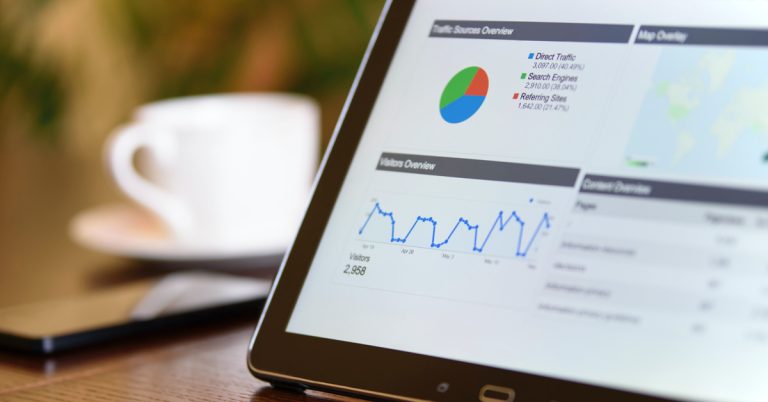In today’s data-driven business world, companies across various industries are relying on data analytics to make informed decisions, improve their processes and drive growth. One of the most popular tools in the market is Power BI, a data visualization and business intelligence tool developed by Microsoft. With its powerful features and intuitive interface, Power BI has transformed the way companies process, analyze, and present data. In this blog, we will take a closer look at the top 5 industries that have been significantly improved using Power BI. From healthcare to education, we will explore how Power BI has helped organizations in various industries to streamline their operations, gain a competitive edge, and make informed decisions based on accurate data.
Table of Contents
Advantages of using Power BI
There are several advantages of using Power BI for data analytics and business intelligence.
1. User-friendly interface
Power BI provides an intuitive and user-friendly interface, allowing users to quickly and easily create custom dashboards, reports, and visualizations. The drag-and-drop functionality makes it easy for users to add and remove data sources, metrics, and filters as needed, without needing extensive technical knowledge.
2. Integration with other Microsoft tools
Power BI integrates seamlessly with other Microsoft tools, such as Excel and SharePoint. This means that users can easily import data from these tools, and export Power BI reports to be shared with colleagues through SharePoint or other collaboration tools.
3. Real-time data analysis
Power BI allows users to connect to live data sources, such as databases, web services, and streaming data sources. This means that users can view and analyze data in real-time, giving them up-to-date insights and enabling them to make informed decisions quickly.
4. Customizable visualizations
Power BI provides a wide range of customizable visualizations, including charts, tables, maps, and gauges. Users can choose from a variety of templates or create their own custom visualizations, allowing them to present their data in a way that is most meaningful for their organization.
5. Cost-effective
Power BI offers flexible pricing options, including a free version and a range of affordable paid plans. This makes it accessible for organizations of all sizes, from small startups to large enterprises.
Top 5 Industries who won big with Power BI
Let’s take a closer look at the top 5 industries that have been significantly improved by Power BI.
1. Healthcare
The healthcare industry is one of the most dynamic and fast-paced industries, and it’s crucial to have access to accurate, up-to-date data to make informed decisions. Power BI has been instrumental in helping healthcare organizations to process and analyze vast amounts of data, making it easier to identify patterns and trends. The visualizations provided by Power BI allow healthcare organizations to identify areas of improvement and make informed decisions about patient care and resource allocation.
One of the key areas where Power BI has made a significant impact in the healthcare industry is in the management of clinical trials. Clinical trials are complex and time-consuming, and Power BI makes it easier to track and analyze data from multiple sources, including patient data, treatment data, and clinical outcomes. This allows healthcare organizations to make informed decisions about patient treatment and improve the quality of care.
2. Retail
Retail is another industry that has seen significant improvement with the use of Power BI. The retail industry is highly competitive, and retailers need access to accurate data to make informed decisions about inventory management, customer behavior, and sales performance. Power BI provides retailers with a comprehensive view of their business data, allowing them to identify trends, track sales performance, and make informed decisions about product placement and marketing strategies.
One of the key benefits of Power BI in the retail industry is the ability to create interactive dashboards that allow retailers to track sales performance in real-time. This provides retailers with a clear understanding of which products are selling well, and which ones need to be re-stocked or discontinued. The ability to track customer behavior, including demographics and purchasing habits, is also crucial for retailers, and Power BI provides this information in a visually appealing format, making it easier to understand and act upon.
3. Financial Services
The financial services industry is another industry that has been significantly improved by Power BI. Financial institutions deal with vast amounts of data on a daily basis, and it’s crucial to have a tool that can help them process, analyze and present this data in a meaningful way. Power BI provides financial institutions with the ability to create custom dashboards and visualizations that provide a comprehensive view of their financial data.
One of the key benefits of Power BI in the financial services industry is the ability to track performance metrics, such as profitability, return on investment, and customer satisfaction. Financial institutions can use Power BI to monitor their performance over time, and make informed decisions about investments, lending practices, and customer engagement strategies. Power BI also provides financial institutions with the ability to monitor risk, allowing them to identify potential issues and take proactive steps to mitigate risk.
4. Manufacturing
The manufacturing industry has been significantly impacted by the use of Power BI. Manufacturing organizations need to track and analyze data from multiple sources, including production data, quality data, and supply chain data, to make informed decisions about production processes and product quality. Power BI provides manufacturing organizations with the ability to create custom dashboards and visualizations that provide a comprehensive view of their data.
One of the key benefits of Power BI in the manufacturing industry is the ability to track production performance in real-time. This allows manufacturing organizations to identify areas of improvement, such as bottlenecks in production processes, and make informed decisions about resource allocation. Power BI also provides manufacturers with the ability to track quality
5. Education
The education industry is another industry that has seen significant improvement with the use of Power BI. Education organizations deal with vast amounts of data on a daily basis, including student data, course data, and performance data. Power BI provides education organizations with the ability to create custom dashboards and visualizations that provide a comprehensive view of their data.
One of the key benefits of Power BI in the education industry is the ability to track student performance in real-time. This allows educators to identify areas where students may be struggling and provide targeted interventions to improve student outcomes. Power BI also provides educators with the ability to track course data, allowing them to make informed decisions about course design and curriculum development. Additionally, Power BI allows education organizations to track enrollment data and make informed decisions about resource allocation, such as staffing and facility usage. Overall, Power BI provides educators with a comprehensive view of their data, enabling them to make informed decisions that improve student outcomes.
Are you still operating on instincts?
The use of Power BI has been a game-changer for many industries. It has enabled organizations to harness the power of their data, providing valuable insights and enabling informed decision-making. As we continue to navigate the fast-paced and ever-changing business landscape, data analytics will continue to be a crucial aspect of driving success. The use of tools like Power BI will be increasingly important for businesses to remain competitive, adapt to change, and stay ahead of the curve.













